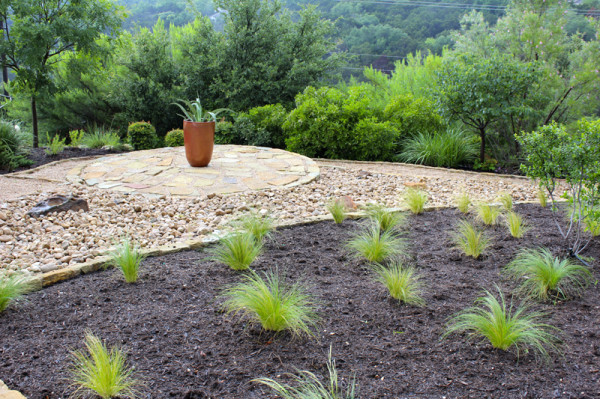Ideas for an alternative lawn

 For decades, carpets of lush, green suburban lawns have been icons of an attractive, well-maintained home. But our recent drought has made more than a few homeowners reconsider the composition of their landscape. Last year, almost all of my landscaping clients requested a design that included eliminating at least a section of lawn as part of their overall plan.
For decades, carpets of lush, green suburban lawns have been icons of an attractive, well-maintained home. But our recent drought has made more than a few homeowners reconsider the composition of their landscape. Last year, almost all of my landscaping clients requested a design that included eliminating at least a section of lawn as part of their overall plan.
Citing skyrocketing water bills, parched and dying grass and constant maintenance woes, homeowners are eager for eco-friendly alternatives to traditional lawns that are becoming harder and harder to maintain in our climate.
But many people are unsure about how to approach it. Some believe they are limited to a stretch of glaring white gravel with thorny cacti. The fact is, we don’t live in the desert (despite occasionally feeling like it) and there are many other beautiful landscaping options to match a wide range of personal styles.
Lawn replacement choices run the gamut from low-maintenance beds to welcoming patios, paths ad dry creeks to enticing features like water features, play spaces, gazebos and fire pits.
While xeric or drought-tolerant plants require less water, all plants need to be watered. Central Texas boasts a long list of native plants that, once established, can survive our rigorous conditions with less watering. When planted, they will require regular watering for several months to get them started, but will then be less thirsty than other non-native or adapted plants.
In addition to flowering plants like lantana, salvia, yellow bell, damianita, skullcap, plumbago, catmint, and blackfoot daisy, to name just a few, many xeric grasses and sedges can also be used in a smaller area en mass to create a grassy, non-traditional green space. Among the most successful grasses for achieving this look are Mexican feather grass, little bluestem grass, Texas sedge and Berkley sedge. Planting a small space with these grasses may also have the added benefit of appeasing some rigid HOAs.
Groundcovers and creeping plants can also be used to take up lawn space – some of those that work well here include Asian jasmine, sweet potato vine, silver ponyfoot, purple heart, wooly stemodia and a variety of thymes.
The Lady Bird Johnson Wildflower Center (www.wildflower.org) center maintains an excellent database of native plants — their needs and characteristics – that grow well in Central Texas.
While removing swaths of grass and expanding flowing lines of landscape beds with water-wise plants is one solution, it’s not practical for most gardeners to replace an entire lawn this way.
Creating an attractive and inviting landscape usually includes an interesting mix of plants and paths, patios and other areas designed for outdoor entertaining and enjoyment.
You can replace lawn with sitting and entertaining space – using paths of mulch, decomposed granite or flagstone, patios of native stone or bricks, wooden decks and gazebos, creating an inviting garden space when combined with planting beds. Dry creeks can be added to meander through your landscape – to address drainage issues or simply for aesthetic use as a textural contrast to plants and mulch. Water features – from ponds to disappearing fountains in ceramic pots can add a focal point and invite wildlife into your garden. Playscapes, hammocks, washer pits and fire pits or chimenarias can also be placed on a variety of hardscape materials in lieu of grass.
Austin garden blogger, writer and author Pam Penick’s newly released book, Lawn Gone! Low Maintenance, Sustainable Attractive Alternatives for Your Yard, provides homeowners with practical solutions for gardeners wanting to replace some lawn.
The growing demand for lawn replacement options led Penick to write the book, which includes a section on top rated, regional plant recommendations to help gardeners put their ideas into action.
“So many people in our area want to replace their lawns with less thirsty, greener alternatives,” said Penick, “but they just don’t know how to begin. That’s who I wrote this book for. I want to inspire people with the options and show them how to do it.”
The book covers plant options, design considerations and extensive DIY information on the different methods for actually removing the lawn, including solarizing and lasagna gardening. It also includes a wide selection of inspirational color photos with examples of attractive no-lawn or reduced-lawn landscapes.
So if you thought your only alternative was to live with half-dead grass or pave your lawn over with concrete, take heart – with a little creativity and some sweat equity – you can create your own xeric lawn alternative landscape.
A Landscape Designer Garden Coach, Diana Kirby provides landscaping tips at http:/www.dianasdesignsaustin.com and writes a garden blog at https://www.dianasdesignsaustin.com
